NEKO (April 2021)
Illustrator, Photoshop, AdobeXD, Figma, Unity, Maya
Thesis Project, UX/UI Design and Research, Visual DesignProject Collaborators + Roles
[EJ]Jullia D. (She/They) | (Prototyping & Research)
Evan M. (He/Him) | (3D Art & Code Development)
Lyndon A. (He/Him) | (Graphic Design & UI/UX Design) | Website
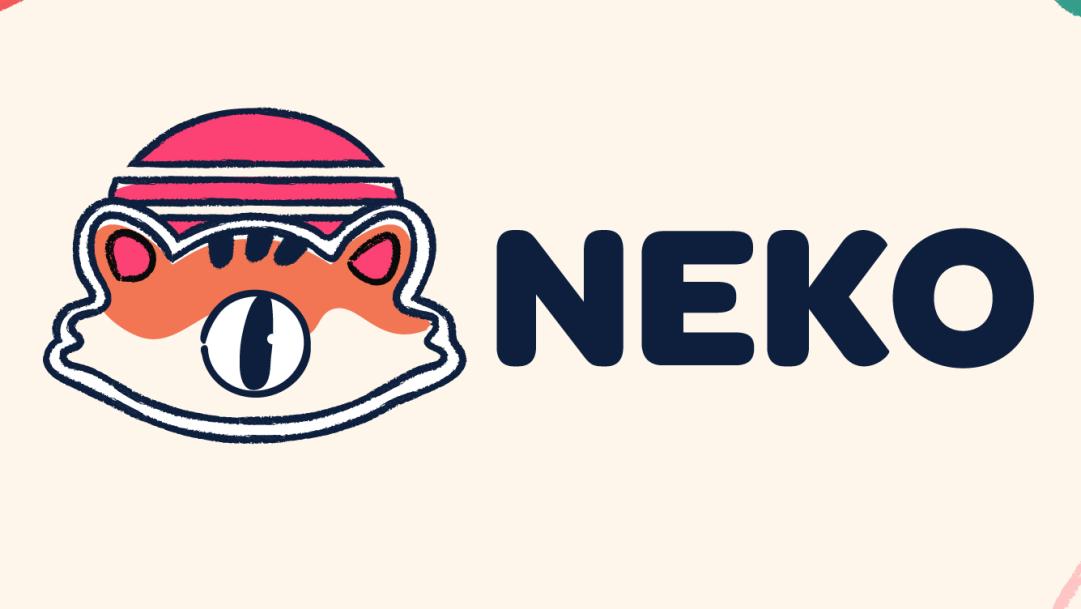
︎

I. Introduction NEKO is a mobile application which supports children and young teenagers by speaking with a virtual assistant, helping them to talk about their mental health challenges by providing online support and resources. The app's main driving point is to provide users with access to real professionals through the use of our augmented reality assistant, NEKO, which can assist in connecting users with appropriate resources and potential therapists based on needs of mental health challenges.
︎

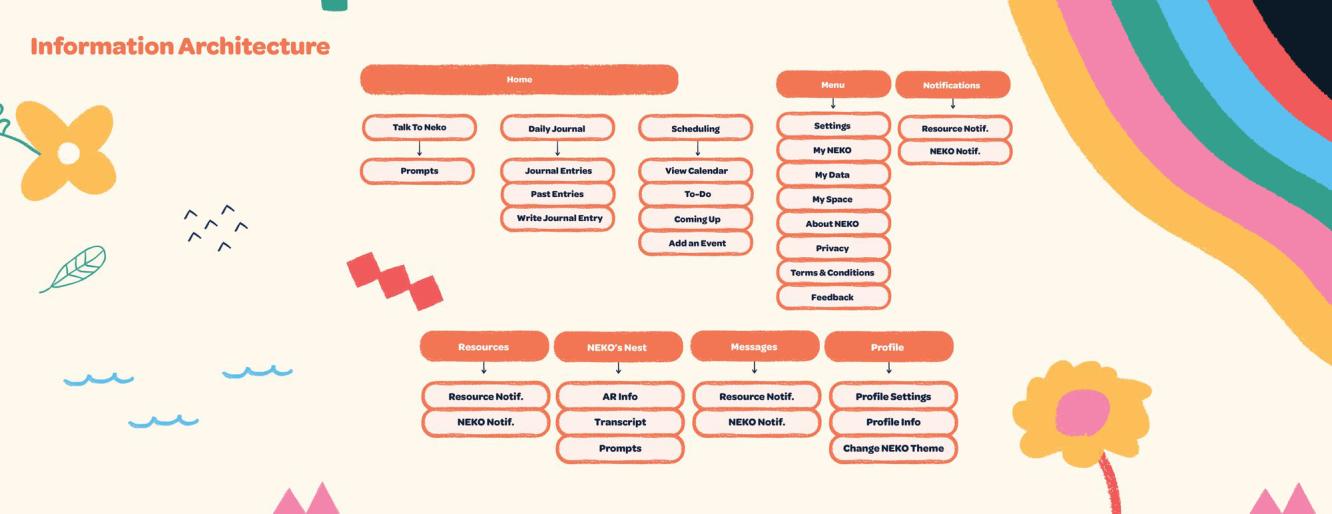
II.I. Background Research [Journey Map + Information Architecture + Competition] We discovered an increasing inclination towards incorporating augmented reality (AR) technology into mental health interventions. AR technology offers multiple advantages, such as delivering immersive experiences that can alleviate stress and anxiety, enhance cognitive abilities, and encourage relaxation. Furthermore, it provides a distinctive prospect for individuals to interact with mental health solutions in a more stimulating and captivating manner.
In the process of developing the journey map for NEKO, we acknowledged the significance of prioritizing the exchange of information between therapists and individuals seeking mental health assistance. We comprehended that conveying information in a lucid and concise manner is essential to enable therapists to have a comprehensive comprehension of their clients' requirements and provide customized support accordingly.
To accomplish this objective, we meticulously charted out the journey of both therapists and individuals seeking support, identifying the crucial touchpoints where information would be shared. We gave special consideration to the information that was most vital at each touchpoint, ensuring that it was readily accessible and presented in a clear and comprehensible manner. Our goal was to prioritize information exchange in such a manner that the journey map would foster effective communication and improve the overall experience of both therapists and individuals seeking mental health assistance on our platform.
︎
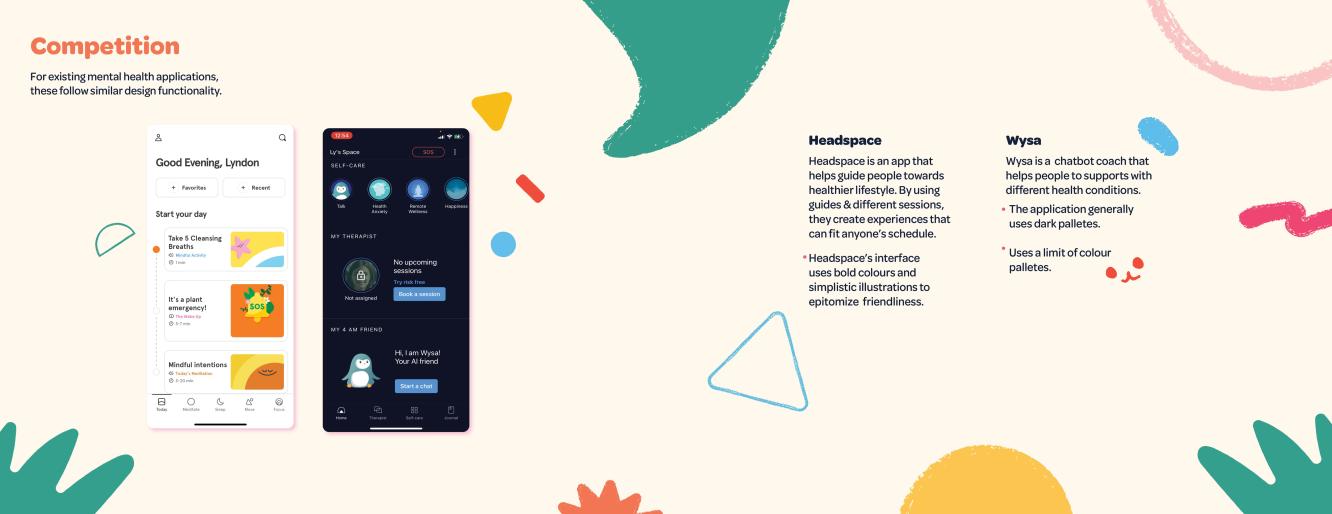
II.II. Background Research [Competition] During the development of NEKO, we undertook a thorough evaluation of the potential advantages and drawbacks that are linked with mental health applications. We drew inspiration from well-established apps such as Headspace and Wysa and used this knowledge to inform our approach. By doing so, we were able to integrate the most beneficial aspects of existing apps while minimizing any potential risks.
︎

III. Goals When it comes to mental health applications, it's crucial to consider several values within the context of mental health environments. For NEKO, a platform designed to aid people in expressing their mental health, a visual style was developed that aims to be both integrated and integral between users and the app. As a brand, it's important for NEKO to convey a comfortable and friendly feel, which should be reflected in its brand identity and visual system.
For Users... Through this app we want NEKO to be able to provide a platform for users to access a mental health software that helps identify and address problems that is being spotted early on - and that can improve their overall health.
For Therapists... Provide a platform that can help connect with individuals looking for assistance in their mental health. Through NEKO we hope to give them an accessible tool to reach out to many more potential clients and extend their help to more indivisuals.
︎
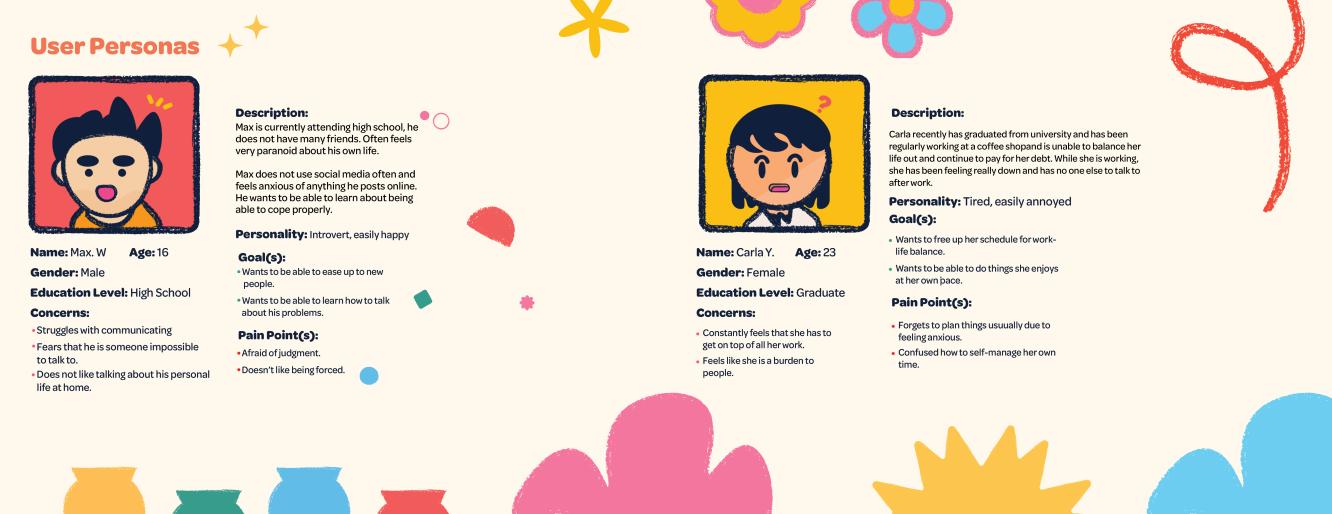
IV. Personas We carefully considered the challenges and suggestions of our users, especially those who are most susceptible, regarding mental health support. We acknowledged that some individuals may feel uneasy or discriminated against when reaching out for mental health assistance, and therefore, we identified the need to offer extra support and alternatives to improve the accessibility and comfort of the process.
︎

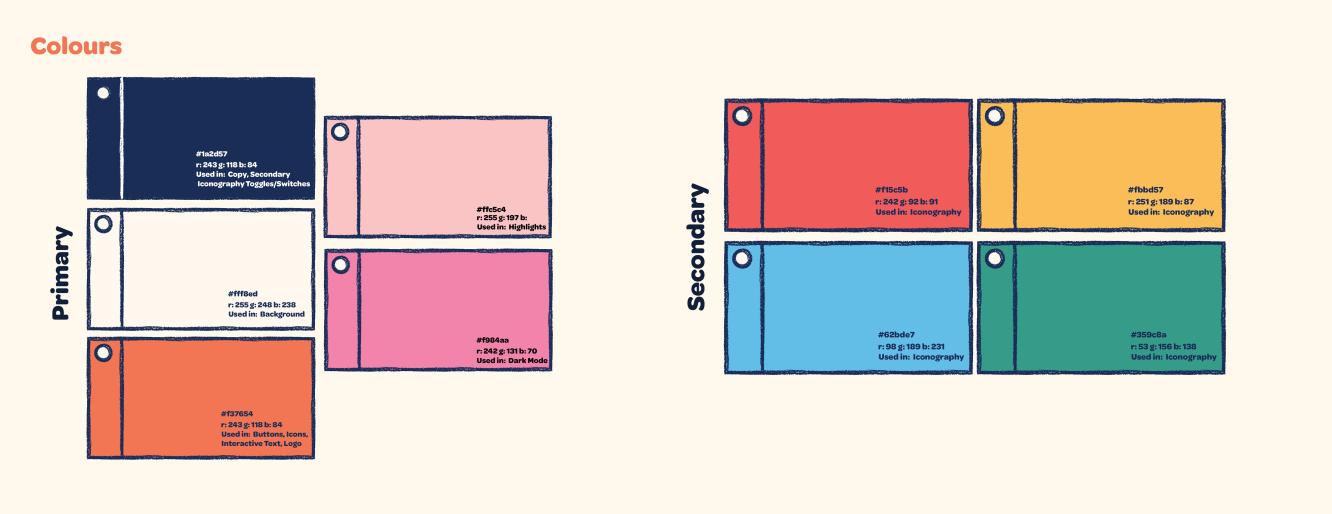
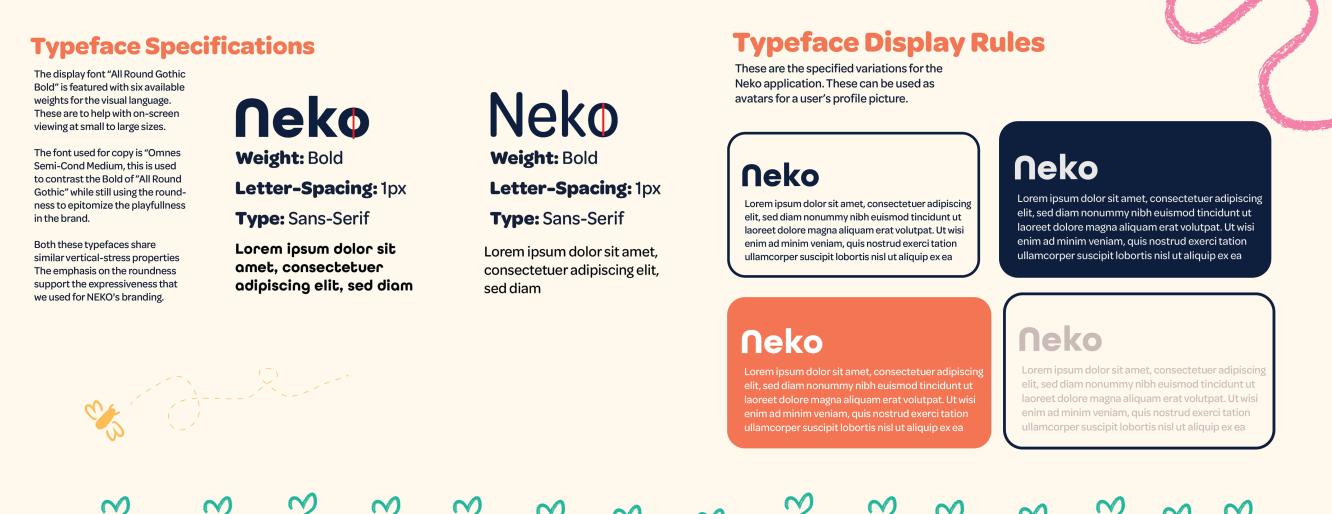
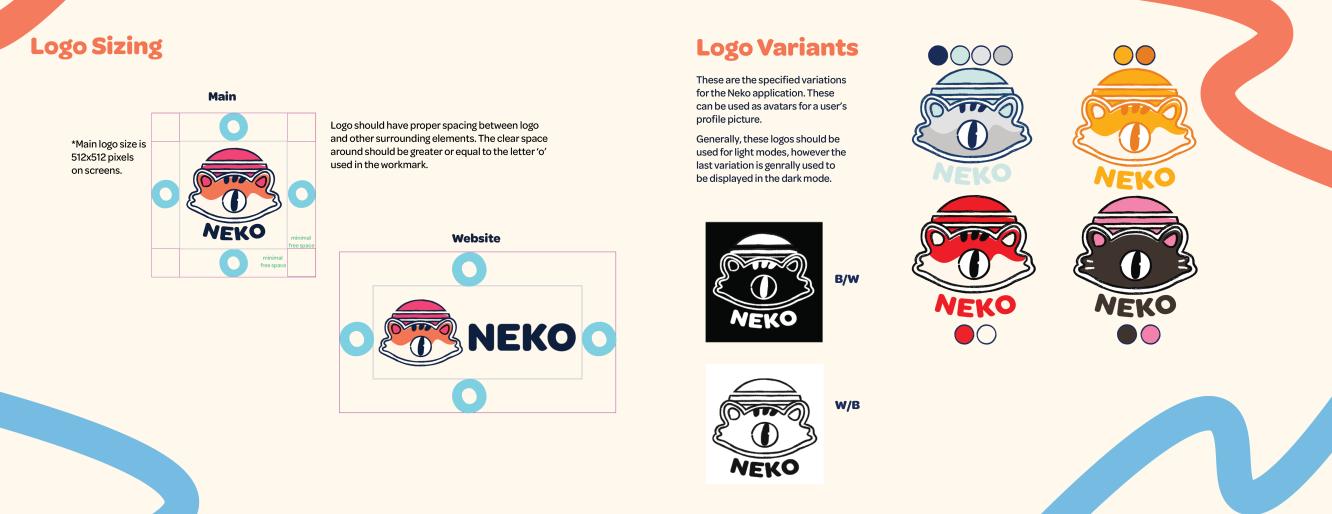
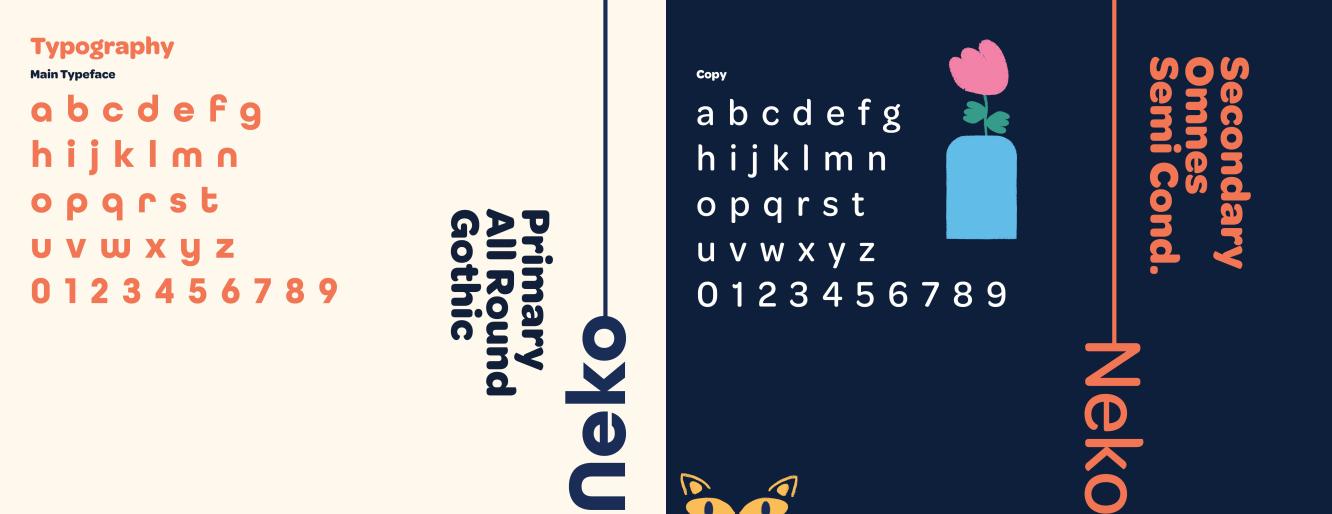
We purposefully selected colours that are soothing to the eye and don't elicit strong feelings in order to achieve this look. Additionally, the use of pastel hues contributed to the tranquilly and serenity that can be especially helpful for people who are stressed or anxious. This was a deliberate decision to create a user-friendly and welcoming environment. We believe that this approach will help users to feel more at ease when using the app, and ultimately, facilitate better mental health outcomes.
︎
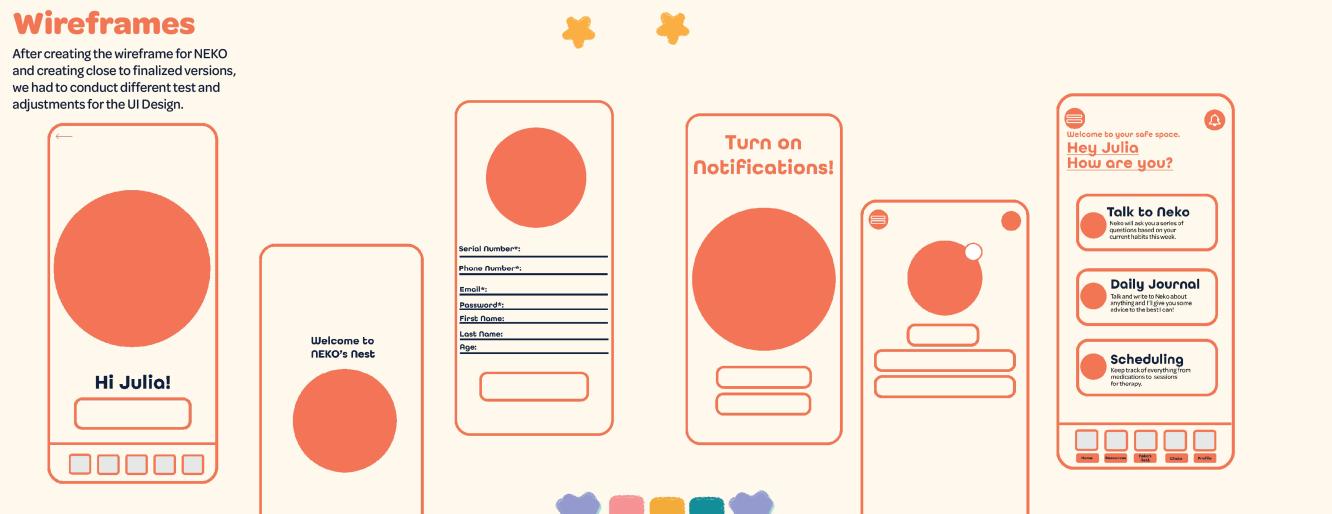
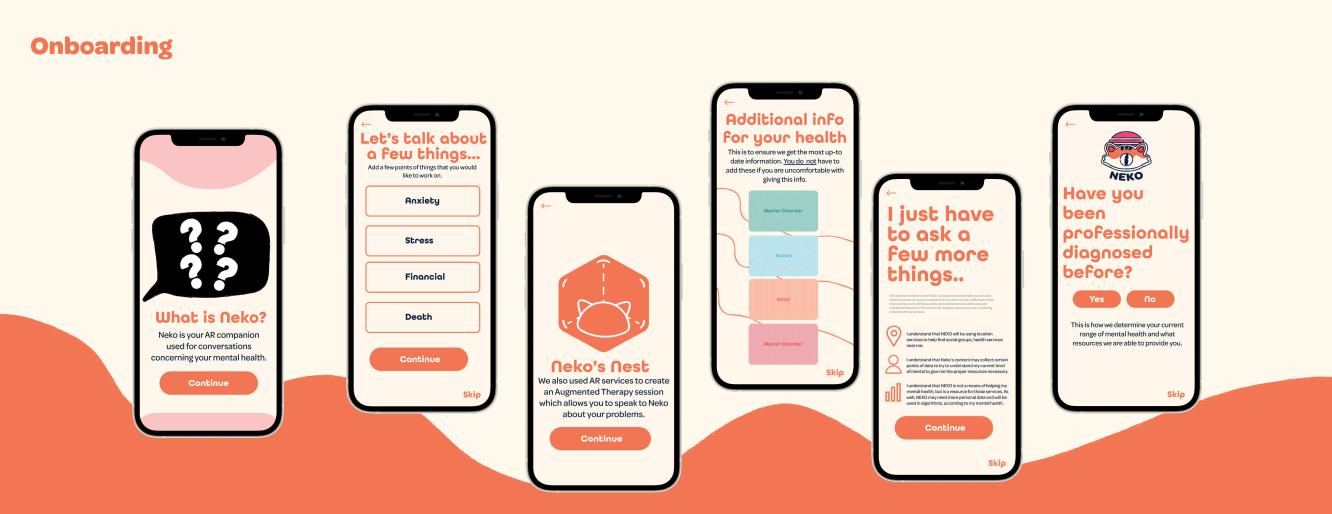
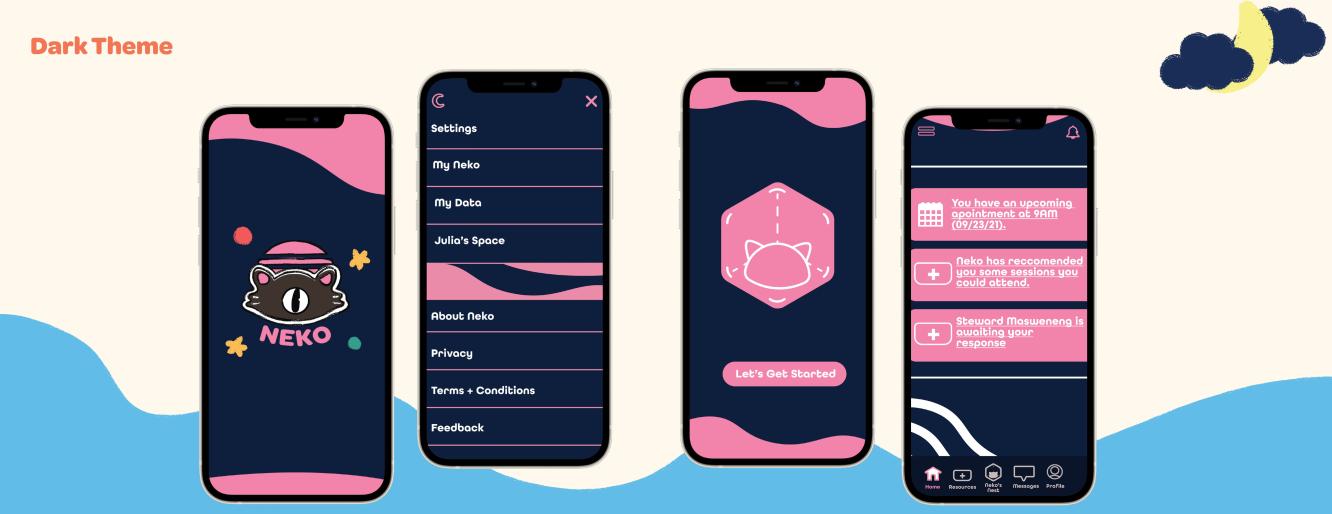
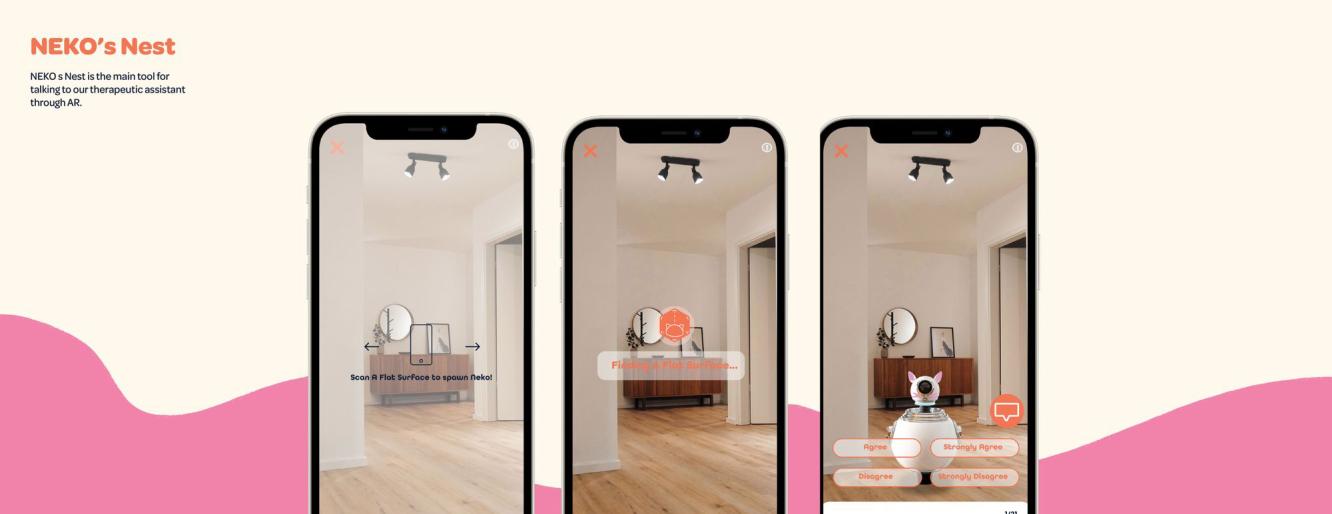 V.II. System Design - Low & High-Fidelity Wireframes
During the process of developing low-fidelity wireframes for NEKO, we became aware of the potential benefits of integrating AR technology into the user experience. As a result, we identified two distinct user experiences: one that includes AR and one that does not.
V.II. System Design - Low & High-Fidelity Wireframes
During the process of developing low-fidelity wireframes for NEKO, we became aware of the potential benefits of integrating AR technology into the user experience. As a result, we identified two distinct user experiences: one that includes AR and one that does not.In exploring the AR experience, we investigated the possibility of integrating immersive elements, such as interactive environments and 3D objects, into the user interface. This approach has the potential to create a more engaging and memorable experience for users, while also helping to overcome any existing stigma around mental health support.
In contrast, for the experience without AR, our focus was on designing a user interface that is straightforward and easy to navigate, regardless of age or background. We paid close attention to the organization and presentation of information, ensuring that it is easily accessible and understandable for all users.
︎




︎
VII. Promotional Video
